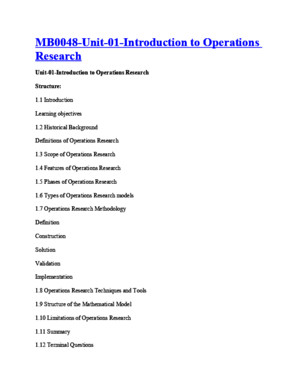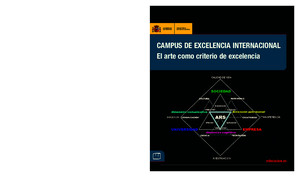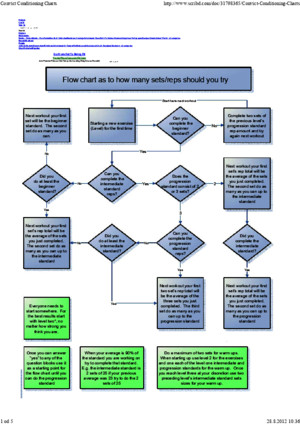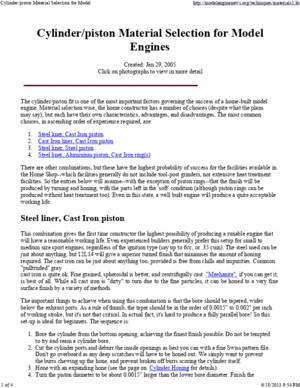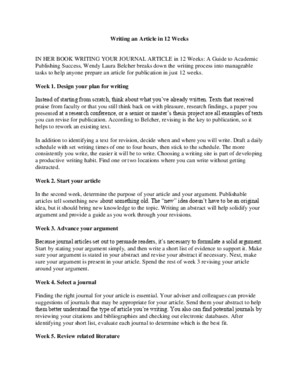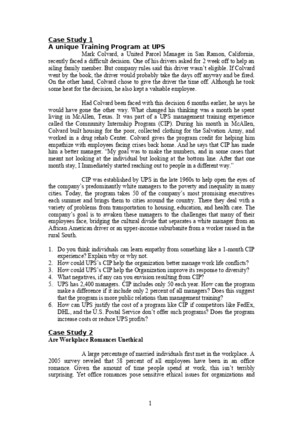8 Condition for Excelence in Ql Research
There is document - 8 Condition for Excelence in Ql Research available here for reading and downloading. Use the download button below or simple online reader.
The file extension - PDF and ranks to the Documents category.
Tags
Related
Comments
Log in to leave a message!
Description
Download 8 Condition for Excelence in Ql Research
Transcripts
http://qixsagepubcom/ Qualitative Inquiry http://qixsagepubcom/content/16/10/837The online version of this article can be found at: DOI: 101177/1077800410383121 2010 16: 837 srcinally published online 1 October 2010 Qualitative Inquiry Sarah J Tracy Qualitative Quality: Eight 'Big-Tent' Criteria for Excellent Qualitative Research Published by: http://wwwsagepublicationscom can be found at: Qualitative Inquiry Additional services and information for http://qixsagepubcom/cgi/alerts Email Alerts: http://qixsagepubcom/subscriptions Subscriptions: http://wwwsagepubcom/journalsReprintsnav Reprints: http://wwwsagepubcom/journalsPermissionsnav Permissions: http://qixsagepubcom/content/16/10/837refshtml Citations: What is This? - Oct 1, 2010OnlineFirst Version of Record - Oct 26, 2010Version of Record >> by Baban Adriana on January 3, 2014qixsagepubcomDownloaded from by Baban Adriana on January 3, 2014qixsagepubcomDownloaded from Qualitative Inquiry16(10) 837 –851© The Author(s) 2010Reprints and permission: sagepubcom/journalsPermissionsnavDOI: 101177/1077800410383121http://qixsagepubcom Twenty-five years ago, Lincoln and Guba (1985) asked, “How can an inquirer persuade his or her audiences that the research findings of an inquiry are worth paying attention to (p 290)?” Since that time, qualitative scholars have offered important insights about best practices for qualitative research (Bochner, 2000; Creswell, 2007; Denzin Lincoln, 2005; Guba Lincoln, 2005; Richardson, 2000a; Seale, 1999; Stenbacka, 2001) Values for quality, like all social knowledge, are ever changing and situated within local contexts and current con- versations As such, it is important to regularly dialogue about what makes for good qualitative research Here, I provide an eight-point conceptualization of qualitative quality that is unique, and perhaps provocative, because it delineates eight universal hallmarks for high quality qualitative methods across paradigms—and differentiates these from mean prac-tices I suggest that each criterion of quality can be approached via a variety of paths and crafts, the combination of which depends on the specific researcher, context, theoretical affili- ation, and project The primary impetus for developing this conceptualization is pedagogical As a teacher of qualitative methods, I am motivated to draw together crafts and best practices that stu- dents can use to help them practice excellent qualitative work I want them to be able to understand what makes qualitative research good, and answer questions like the one below: Are these findings sufficiently authentic that I [and research participants] may trust myself in acting on their implications? More to the point, would I feel sufficiently secure about these findings to construct social policy or legislation based on them? (Guba Lincoln, 2005, p 205) Certainly, the literature is brimming with criteria for qualitative goodness including concepts such as catalytic validity (Lather, 1986), empathetic validity (Dadds, 2008), crystallization (Richardson, 2000b), tacit knowledge (Altheide Johnson, 1994), transferability (Lincoln Guba, 1985), and so on The proliferation of concepts for qualitative excellence undeniably illustrates the creative complexity of the qualitative methodological landscape Our cornucopia of distinct concepts stands in marked contrast to the relative consensus in the quantitative community that good research aims for validity, reliability, generalizability, and objectivity (Winter, 2000) However, our vast array of criteria can also bewilder those new to the field, and may reflect “the difficul-ties that qualitative methodologists have had in making their ideas stick” (Seale, 1999, p 467)In addition to providing a parsimonious pedagogical tool, I hope my conceptualization may aid in garnering respect for qualitative methods from power holders who know little about our work Despite the gains of qualitative research in Qualitative Quality: Eight “Big-Tent” Criteria for Excellent Qualitative Research Sarah J Tracy 1 Abstract This article presents a model for quality in qualitative research that is uniquely expansive, yet flexible, in that it makes distinc- tions among qualitative research’s means (methods and practices) and its ends The article first provides a contextualization and rationale for the conceptualization Then the author presents and explores eight key markers of quality in qualitative research including (a) worthy topic, (b) rich rigor, (c) sincerity, (d) credibility, (e) resonance, (f) significant contribution, (g) ethics, and (h) meaningful coherence This eight-point conceptualization offers a useful pedagogical model and provides a common language of qualitative best practices that can be recognized as integral by a variety of audiences While making a case for these markers of quality, the article leaves space for dialogue, imagination, growth, and improvisation Keywords qualitative pedagogy, rigor, credibility, criteria, ethics, evaluation 1 Arizona State University, Tempe Corresponding Author: Sarah J Tracy, The Hugh Downs School of Human Communication, Arizona State University, PO Box 871205, Tempe, AZ 85287-1205Email: SarahTracyasuedu by Baban Adriana on January 3, 2014qixsagepubcomDownloaded from 838 Qualitative Inquiry 16(10) the late 20th century, a methodological conservatism has crept upon social science over the last 10 years (Denzin Giardina, 2008), evidenced in governmental and funding agencies’ preference for research that is quantitative, experi- mental, and statistically generalizable (Cannella Lincoln, 2004) High ranking decision makers—in powerful govern-mental, funding, and institutional review board positions— are often unprepared and unable to appropriately evaluate qualitative analyses that feature ethnography, case study, and naturalistic data (Lather, 2004) A parsimonious framework for qualitative quality can help us communicate value for our work to a variety of audiences Finally, I want to aid in efforts that promote dialogue amongst qualitative scholars from different paradigms If qualitative scholars want to be heard,We cannot afford to fight with one another We need to find new strategic and tactical ways to work with one another We must expand the size of our tent, indeed we need a bigger tent! (Denzin, 2008, p 321) To do so, qualitative researchers should simultaneously avoid a policy of consent to a public atmosphere that favors broad quantitative studies (Atkinson, 2004) but also strategi-cally design ways to respond and act within , rather than being “worked over by” (Cheek, 2007, p 1058) such an environ-ment As I will flesh out below, by distinguishing universal end goals from a complex mix of mean practices, qualitative researchers can speak, if desired, with a unified voice while simultaneously celebrating the complex differences within our community Although these motivations may be innocent enough, I also realize that a consequence of any delineation of criteria is political Tools, frameworks, and criteria are not value free By offering an answer to “what makes a qualitative research study good,” I must also thoughtfully attend to the long his-tory and controversy that swirls amongst the politics of evi- dence Doing so suggests that, before proposing the conceptualization, I address the value of criteria in general as well as the value of this conceptualization, in particular Why Criteria and Why This Model? Some of the leading qualitative scholars have opposed the development of permanent unvarying standards for qualita-tive research, suggesting that universal criteria are problem- atic, if not fruitless (Guba Lincoln, 2005) In an article entitled, “Criteria Against Ourselves,” Bochner (2000) argues that traditional empiricist criteria are unhelpful and even “silly” (2000, p 268) when applied to new and alternative ethnographies He explains that, “We should never insist on reaching agreement beforehand on the criteria to which all arguments, reasoning, and conclusions must appeal” (p 269) Similarly, in a piece entitled, “Farewell to Criteriology,” Schwandt (1996) argues that scholars’ preoccupation with regulative norms about what is good, better, and best have created a virtual cult around criteria Despite these critiques, negative evaluations of criteria often transition into and conclude with new quality standards (eg, Bochner, 2000; Schwandt, 1996)—criteria that are often framed as more flexible and contextually situated than rigid quantitative criteria (Ellingson, 2008; Golafshani, 2003) For example, Lather (1993) plays precisely with the question of “What do you do with validity once you’ve met poststruc-turalism” (p 674) by articulating a set of criteria specific to the postructuralist paradigm that are “open-ended and context sensitive” (p 674)Why would qualitative scholars develop criteria even as they critique it? Because criteria, quite simply, are useful Rules and guidelines help us learn, practice, and perfect Indeed, research on learning (Dreyfus, Dreyfus, Athana-siou, 1986) demonstrates that novices and advanced begin- ners in any craft (whether cooking, skiing, dancing, or playing music) rely heavily on rule-based structures to learn Guide- lines provide a path to expertise Musicians learn basic chords structures that in turn prime them for more advanced impro-visation and jamming (Eisenberg, 1990) Cooks follow reci- pes as preparation for experimenting with novel flavor combinations In short, guidelines and best practices regularly serve as helpful pedagogical launching pads across a variety of interpretive arts Criteria serve as shorthand about the core values of a certain craft A simple structure of qualitative methodological best practices can therefore encourage dialogue with members of the scientific, experimental, and quantitative communities A language of best practices provides the option to frame our work, if desired, as systematic and structured (LeGreco Tracy, 2009), something that may be helpful when dialoguing with people who cling tightly to rules of their own Such conversations may not only get qualitative research noticed and funded but may also elicit thoughtful input that can enrich and improve our work Part of making scholarship powerful is talking in ways that are appreciated by a variety of audi-ences, including grant agencies, governmental officials, and media contacts—many of whom are unfamiliar with the methodology of qualitative research Unfortunately, the qualitative community has faced sev- eral complicating issues that challenge the development of a set of criteria we all support Numbers-based quantitative research emanating from a positivist paradigm still domi- nates public understandings of what equates with scientific validity (Cheek, 2007) However, applying traditional cri- teria like generalizability, objectivity, and reliability to qualitative research is illegitimate; akin to “Catholic ques-tions directed to a Methodist audience” (Guba Lincoln, 2005, p 202) by Baban Adriana on January 3, 2014qixsagepubcomDownloaded from
Recommended


